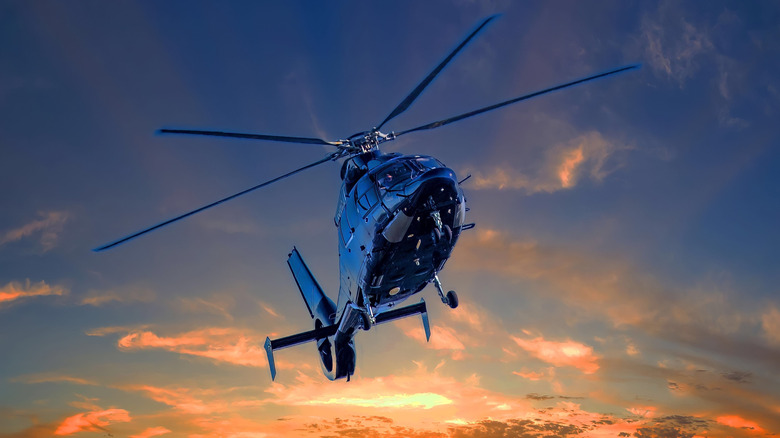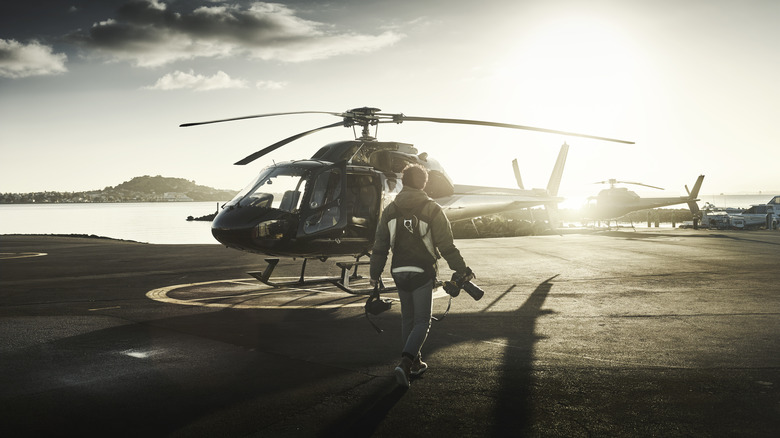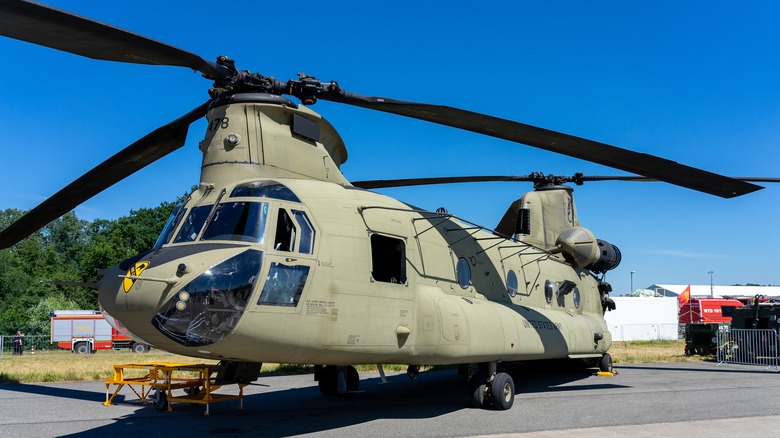How Do Helicopters Change Direction In The Air?
By now, you're probably aware of just how versatile and equally adaptable helicopters are. These aircraft are among the best in the aviation industry, with applications spread across different fields, such as commercial travel, search and rescue, entertainment, and the military. Given how widespread they are, it is no surprise that most folk across the globe know how they work. From their vertical take-off and landing capabilities to their hovering capabilities, these machines are pretty much renowned across the board. However, despite this, many people still don't understand some of the inner workings of these magnificent crafts, namely, how they manage to change direction while in the air.
The science behind how helicopters turn midair is straightforward enough. Most of them usually come with main and tail rotors, which spin to create lift for the craft. This lift can be controlled by regulating the rotors' speed, allowing the helicopter to perform advanced maneuvers such as hovering and buzzing off. However, when it comes to changing directions, a mechanism connected to the main rotor called a swashplate does most of the heavy lifting. Tilting the swashplate angles the main rotor, generating thrust in the direction the plate is tilted. In a main and tail rotor setup, the tail rotor spins to produce side force, which enables the craft to yaw. Today, we are discussing how helicopters can change direction in the air without spinning out of control.
A century of innovation and improvements
One of the oldest helicopter concepts dates back to the 1910s, when Danish inventor and aviation pioneer Jacob Ellehammer designed a coaxial rotor craft capable of hovering and short hops. Over the 1920s, more innovators stepped in to build on what was, with autogyros, technically the first successful rotorcraft concept, appearing through the '30s. The 1940s and '50s saw a boom in helicopters, such as the Bell 47, which is among the most iconic helicopters in history. Throughout the first half of the 20th century, the idea of the helicopter continued to evolve, with incremental improvements that significantly transformed the aviation industry. However, one constant remained across the board: the concept of the craft's rotors.
The rotors are the meat and bones of the entire craft. In a main and tail rotor configuration, the main rotor spins to create thrust that outweighs the helicopter's overall weight. To counteract the immense force that would otherwise cause the craft to spin out of control, the tail rotor comes into play, creating side thrust and stabilizing the craft. Adding the swashplate allows the aircraft to tilt forward or backward, or to the right or left. But what about helicopters that don't feature the main and tail rotor setup?
There are several rotor configurations that do not require a tail rotor
While main and tail rotor (single main rotor) helicopters are the most common in today's skies, several others are capable of the same maneuvers these helicopters can perform, such as vertical take off and landing and hovering, but without the tail rotors. These configurations include side-by-side rotor configurations, as seen in the largest helicopter ever built: the Soviet Mil V-12; synchropter or intermeshing rotor configuration, as seen in the Kaman HH-43; tandem rotor overlapping configuration, as seen in the storied Boeing CH-47F Chinook Block II; and finally, the counter-rotating coaxial rotor configuration, as seen in the Kaman Ka-31.
The first of these, the side-by-side rotor configuration, features two counter-rotating rotors on the plane's wings that generate thrust, lifting the helicopter into the air. Once this is achieved, the rotors can tilt horizontally, turning the craft from a helicopter into a fixed-wing plane. For the intermeshing rotor configuration, the aircraft has two rotors on two closely mounted masts. The rotors intermesh when they spin, eliminating the need for a tail rotor. Tandem rotor configuration features two counter-rotating blades, one at the front of the craft and an elevated one at the back. The rotors tilt slightly toward each other, and as they rotate, they cancel out each other's torque that would send the craft spiralling. Last but not least, the coaxial rotor configuration features two counter-rotating rotors on the same mast. The craft yaw clockwise or anti-clockwise depending on which rotor produces more lift.


